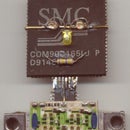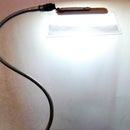Introduction: Eagle
My first tottering steps in Eagle, documented before I come to regard them as routine, and cease to think of them as the very high obstacles I had to overcome to get to use it to advantage.
Step 1: Instal Eagle
Evidently, that Eagle I installed on the desktop is just a pretty picture and does not help design electronic circuits any more than a pitcher of a bush looked at through binoculars (with cap on) will.
The program has to be installed so that clicking on the start button will bring up a menu somewhat like the one below. Clicking on the icon labelled EAGLE 4.13 will start the program. If you have a different version, those digits might be different, of course.
I am sorry, I do not remember any details of installing it. Selecting the default choices offered during installation should be fine, because that is what I usually do.
Step 2: Eagle Control Panel
When Eagle is running, you get a window like this on the desktop. What next?
You see a list down the left edge of the window. Clicking on the + signs to the left of the text label will expand that entry. Click on the + next to the "Projects" line to expand it. I have made a new folder here for my projects, and that examples folder was supplied with the program.
The non-obvious thing is that here you have to right-click to bring up the menu to add items.
I am going to draw a diagram of my oscillator, so I shall add a schematic next.
Step 3: Make a New Project
Right click and select "New Project". A project is a collection of related files on the same subject.
Step 4: Rename New Project
You will get a new empty project which can be renamed to whatever you wish.
Step 5: Renamed to "vhfosc"
The project has been successfully renamed to something descriptive.
Step 6: Make a New Schematic
Select the option to create a new schematic. A new, blank schematic page is created for you.
Step 7: Add Components
Add components to your design. The icon to do it can be found arranged at the left edge of that schematic window.
For further guidance, go to this excellent tutorial:( tutorial https://www.instructables.com/id/EXU9BO166NEQHO8XFU/ )
Step 8: Finished Circuit
The circuit diagram has been completed, and I shall try designing a printed circuit board for it next.
Step 9: Create New Board
On clicking the icon for new board (top edge, fifth from left) you are presented with this dialogue box. Click yes.
Step 10: Completed Board
This is my design of PCB for the uhf oscillator circuit. A comparison with my hand wired prototype will reveal that they are similiar.
For guidance in getting to this step, go to this excellent tutorial: ( PCBtutorial https://www.instructables.com/id/EZ3WN1QUKYES9J5X48/ )
Make a PCB layout anyway, even if you intend to random wire up the circuit. It will show you the best position to place each component so that the wires make the least tangle - or the most, if you prefer that.
Have Fun.













